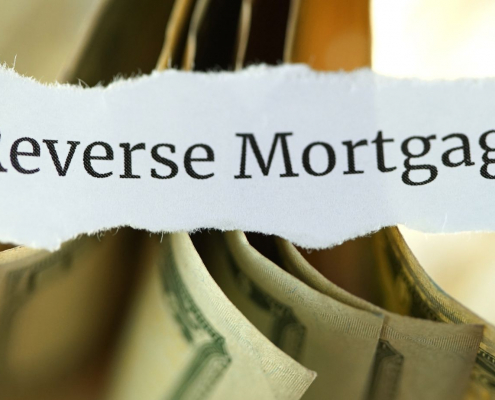Proposition 19 is officially titled “The Home Protection for Seniors, Severely Disabled, Families, and Victims of Wildfire or Natural Disasters Act”.
To better understand the language of Proposition 19, we need to define some terms.
- Primary Residence means a residence eligible for either of the following:
- The homeowner’ exemption or
- The disable veteran’s exemption
- Taxable value means the base year value (the current property tax assessment value).
- Replacement Dwelling means the same as Replacement primary residence.
Prior to the passing of Proposition 19, the California Constitution limited the amount of ad valorem taxes on real property to 1% of the full cash value of that property, defined as the county assessor’s valuation of real property as shown on the 1975–76 tax bill and, thereafter, the appraised value of the property when purchased, newly constructed, or a change in ownership that occurs after the 1975 assessment, subject to an annual inflation adjustment not to exceed 2%.
The California Constitution authorized the Legislature to authorize a person over 55 years of age or any severely and permanently disabled person residing in property eligible for the homeowner’s exemption to transfer the base year value of that property to a replacement dwelling of equal or lesser value located in the same county, or another county that has adopted an ordinance allowing base years value transfers from other counties, as provided.
The California Constitution also provided that the purchase or transfer of the principal residence, and the first $1,000,000 of other real property, of a transferor in the case of a transfer between parents and their children, or between grandparents and their grandchildren if all the parents of those grandchildren are deceased, is not a “purchase” or “change in ownership” for purposes of determining the “full cash value” of property for taxation.
Proposition 19 passed Constitutional Amendment No. 11 that amended California’s Constitution by adding three new sections: Section 2.1, 2.2 and 2.3 to Article XIII A, relating to property tax limitation.
Section 2.1 (a) (1) deals with the limitation on Property Tax Increases on Primary Residences for Seniors, the Severely Disabled, Wildfire and Natural Disaster Victims, and Families.
Section 2.1(a) (2) deals with property Inheritance Rules.
Section 2.2 deals with dedicating revenue for fire protection and emergency response; creating a Fire Response Fund within the State Treasury.
Section 2.3 deals with each county administrative requirements on dealing with revenues derived from these amendments.
The discussion of this Blog is solely on Section 2.1 (a) (1) that modified existing Propositions 60, 90 and 110.
Propositions 60,90 and 110, allowed the property tax value of a primary residence to be moved within a county or to other participating counties (there were only 10 out of 58 counties that participated), one time in your lifetime if the replacement primary residence value was of equal or lesser value, and keep the original tax value.
Proposition 19 changed all of this by limiting property tax increases on primary residences by removing unfair location restrictions on homeowners who are severely disabled, victims of wildfires or other natural disasters, or seniors over 55 years of age that need
- to move closer to family or medical care, downsize, find a home that better fits their needs, or replace a damaged home and limit damage from wildfires on homes through dedicated funding for fire protection and emergency response.
The effective date of Section 2.1(a) is April 1, 2021. What Section 2.1(a) does is to allow:
- An owner of a primary residence who is
- over 55 years of age, or
- severely disabled, or a
- victim of a wildfire or natural disaster
to transfer the taxable value of their primary residence to a replacement primary residence:
- located anywhere in this state,
- regardless of the location or value of the replacement primary residence,
- that is purchased or newly constructed as that person’s principal residence within two years of the sale of the original primary residence.
The taxable value is calculated as follows:
- If the transfer of taxable value to a replacement primary residence
- is equal or lesser value than the original primary residence,
- the taxable value of the replacement primary residence shall be deemed to be the taxable value of the original primary residence.
- If the transfer of taxable value to a replacement primary residence
- is of greater value than the original primary residence,
- the taxable value of the replacement primary residence shall be calculated by:
- adding the difference between the full cash value of the original primary residence and the full cash value of the replacement primary residence
- to the taxable value of the original primary residence.
An owner of a primary residence who is over 55 years of age or severely disabled shall be allowed to transfer the taxable value of a primary residence three times during their lifetime.
The benefit is not automatic. Any person who seeks to transfer the taxable value of their primary residence pursuant to subdivision 2.1(a) must file an application with the assessor of the county in which the replacement primary residence is located. Assume a 1% tax rate.
Let us look at some examples:
Primary residence sold for- $1,000,000
Old Home assessed value- $300,000
Value of new replacement primary residence- $900,000
Under Prop-19 you can transfer the current assessed value.
Current value of primary residence- $1,000,000
Current assessed value- $300,000
Value of new replacement primary residence- $1,500,000
Under Prop-19 the new current assessed value
will be $300,000 + ($1,500,000 – $1,000,000) = $300,000 + $500,000 = $800,000.
 https://www.copenbarger.com/wp-content/uploads/2022/09/Millennials.jpg
924
1640
Valerie Guerrero
https://www.copenbarger.com/wp-content/uploads/2019/07/copenbarger-attorney-logo.jpg
Valerie Guerrero2022-10-14 06:00:142022-09-30 08:30:33Millennials Are Planning Their Estates More Than Ever
https://www.copenbarger.com/wp-content/uploads/2022/09/Millennials.jpg
924
1640
Valerie Guerrero
https://www.copenbarger.com/wp-content/uploads/2019/07/copenbarger-attorney-logo.jpg
Valerie Guerrero2022-10-14 06:00:142022-09-30 08:30:33Millennials Are Planning Their Estates More Than Ever



